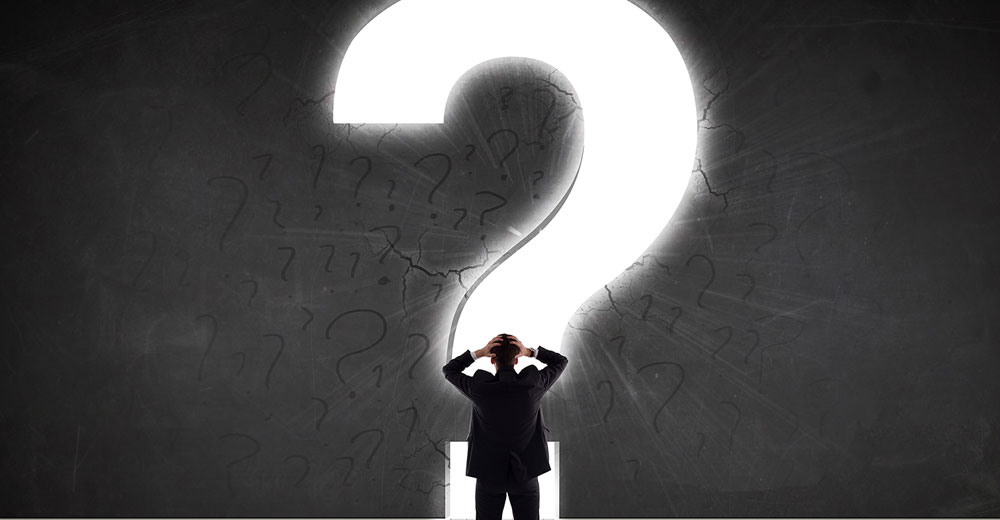Software systems come and go.
Back in the day, they were tightly tied to the hardware and operating system in your data center, even to the point that each system had to be compiled for specific OS versions and the language it was written in.
“We’re a [hardware] shop,” determined if salespeople should even unpack their laptops. So, when a business changed hardware, it was a big occasion for bringing in the vendors. That’s not so much the case today, as modern technology has obscured hardware and operating system questions. Cloud computing has had a lot to do with it.
What remains is the basic idea of swapping out old systems to gain the benefits of new technologies, i.e., competitive advantages. Modern technology has made upgrading much easier. So, the fundamental questions remain: when is it time to re-evaluate your commitments in CRM, and how do you know for sure?
This simple quiz is based on my own market research for clients which I share with you to stimulate your thinking.
Who was president when you bought your CRM?
Okay, starting with a trick question here. The answer isn’t really about who was president unless your answer was Theodore Roosevelt. The key point is if you bought it. There are a lot of legacy systems still in operation that were licensed in client-server days. Most of them are hard-coded and brittle and need to be replaced.
If you ever had a team strategy meeting and someone said, “Our system won’t let us do that,” it might be because your system is one of those, and you might want to consider replacing it. This isn’t an age thing, though. Salesforce got started during George W. Bush’s first term (version one was coded under Clinton), and if you subscribed to it then, good for you. Your system is still up to date.
Does your business still work the same as it did when you first got CRM?
Ha! Of course, it doesn’t work the same way! You’ve changed, and the business has evolved. Has your CRM kept up? Too many businesses I’ve surveyed say they have indeed kept up, but when you dig a little, the answer is rather ugly.
Employees keep those older systems running by effectively integrating them. They enter and re-enter data, manually move it to different systems and back, and use harvested data in other free-standing systems like social media. People work really hard at this kind of integration, which saps their ability to do their real jobs, such as interacting with customers.
Employees also work longer. In one survey I did for Oracle, employees admitted taking calls in their free time, at school events or even in the bathroom. Too much information! But if your employees sound like these people, it’s time to call some vendors.
Database or platform? How many, and does it matter?
The answer is you shouldn’t be able to see it because your platform should generate code that knits it all together. You can almost not care how many databases you use in CRM as long as the system ensures that people can get the information they need when and where it’s needed.
We’re after generated interfaces, and the generator is part of the platform—or should be. The practical effect is a well-rounded view of the customer.
Do your employees consider email, spreadsheets, and social media to be CRM tools? Do you?
It doesn’t matter to me, but those tools don’t have databases behind them, meaning they can provide little organizational memory. OrgMem is an unsung benefit of CRM because it allows us to get new people up to speed quickly so that customers are never left hanging.
My data shows this has been hugely important during the pandemic. Nonetheless, in another survey I did, CRM proper came in fourth behind email and social media when we asked people to think about all of the tools they considered to be CRM. This is as wrong as a bologna and whipped cream sandwich.
How well has your organization supported employees in sales, marketing, and service during the pandemic?
Here’s another situation where the answer is less important than the thinking that it stimulates.
During the pandemic, people got used to working remotely, and some did better than others with working anywhere because they had robust tools for collaborating and sharing information. These are key things that are important now but that CRM was not always attuned to. So, answering this question should raise the basic issue of how well you support your people today and how you will do it tomorrow.
Also, during the dark days of Covid we discovered that millions of white-collar people stepped away from their desks in a semi-permanent way. The people who filled in had a lot of catching up to do on both the customer and vendor sides.
As a result, many businesses that were up to date with CRM were able to use their CRM systems to provide their customers with some institutional memory they couldn’t get elsewhere:
- Where are we in this evaluation process?
- Do we really need this gizmo?
- What do seasoned people in my own organization think of this?
These are all questions that a vendor’s CRM system could answer for customers with new people in purchasing positions.
This will get you started, but clearly, only you know your business and its needs.
One last thing I’d advise is just having a low-risk conversation with a few vendors. Ask open-ended questions about the capabilities of their products. If some of them sound unfamiliar or if they make you envious, there’s a good chance you may be on the cusp of updating your CRM deployment.



























































